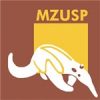With about 130 years of history, the Ichthyological Collection of MZUSP currently includes more than 130,000 lots and 1.5 million specimens, of which 5,000 are type specimens. The collection occupies an area of approximately 700 m² and includes representatives of more than 9,000 species, 1,800 genera and 350 families of fish. About 80% of the lots are freshwater fish, mainly from Brazil. The collection receives about 85 visiting researchers per year and sends large quantities of material to other institutions (about 120 invoices/year and a total of 12,000 lots currently on loan to other institutions). These numbers make the Ichthyological Collection of MZUSP the largest in Latin America and one of the most important in the world for the study of Neotropical fish.
Servicio de Vertebrados
Ichthyology
The birth of the Ichthyological Collection in MZUSP dates back to the end of the 19th century before the foundation of its current institutional affiliation. The growth of the collection was modest but constant in the early years until the 1920s. This expansion was interrupted in the following decades, but the situation changed dramatically in the 1960s. That is when the curators Heraldo Bristki and Naércio Menezes were hired and the Permanent Expedition to the Amazon (EPA) program began, triggering eight years of intense Amazon fish collections. Important additions of marine fish occurred in the late 1960s and early 1970s, with the hiring of the curator José Lima de Figueiredo and the expeditions of the oceanographic ship ‘Prof. W. Besnard’ along the Brazilian coast. By the mid-1970s, the collection counted more than 200,000 specimens, an order of magnitude greater than the pre-1960 figures. In 1969, the museum was incorporated into the Universidade de São Paulo and the three fish curators became professors, thus beginning their careers as academic supervisors at undergraduate and graduate levels. The continuous research activity of these professors and their students resulted in a continuous flow of material into the collection. In this period, the Fish Section of MZUSP reaches international relevance and establishes long-term partnerships with foreign institutions. In the 80’s, a remarkable addition was the incorporation of a large collection of Amazonian fish built by M. Goulding. In the same period, Osvaldo Oyakawa is hired as technician and collection manager. The computerization and database of the collection begins in the following decade. Among the various projects active in the 1990s and 2000s, PRONEX generated enormous quantities of ichthyological material from different locations in the country. Other important projects were Calhamazon and ReviZEE. Mário de Pinna was hired as a professor and curator in 2000 and extended the sample scope of the collection to other continents, mainly to Africa and Asia. Recent hirings include Michel Gianeti (2010) as laboratory technician and Aléssio Datovo (2014) as Professor and Curator. The recent projects “South American Characiforms Inventory” (SACI) and “Diversity and evolution of Gymnotiforms (Teleostei, Ostariophysi)” have promoted the contribution of large quantities of material, especially from Amazonian drainages.
Prof. Dr. Aléssio Datovo
Phone: +55 (11) 2065-8145
Prof. Dr. Mário César Cardoso de Pinna
Phone: +55 (11) 2065-8142
Prof. Dr. Murilo Nogueira de Lima Pastana
Phone: +55 (11) 2065-6690
Prof. Dr. Heraldo Antonio Britski
Phone: +55 (11) 2065-8143
Prof. Dr. Naércio Aquino Menezes
Phone: +55 (11) 2065-8144
Michel Donato Gianeti
E-mail: michelgianeti@usp.br
Phone: +55 (11) 2065-8119
Osvaldo Takeshi Oyakawa
E-mail: oyakawa@usp.br
Phone: +55 (11) 2065-8141
